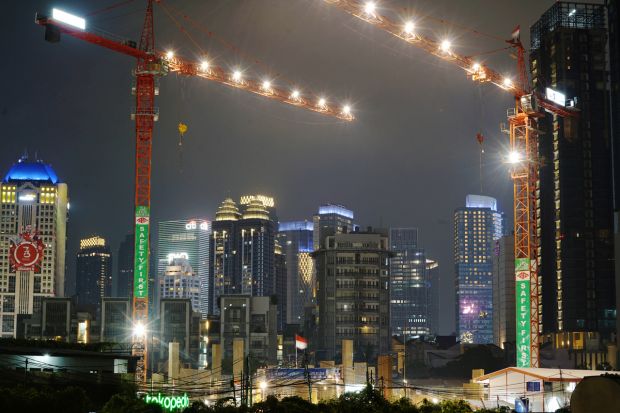A warmer Indonesia will need more cooling equipment – but is it ready for the cost?
INDONESIA’S sales of cooling equipment – refrigeration and air conditioning (AC) – is expected to grow rapidly from 2018 to 2030, at 5.1 per cent annually, only second to India’s annual growth rate of 5.6 per cent, according to a report conducted by the Economist Intelligence Unit (EIU) across six countries.
Indonesia’s annual cooling sales will likely grow from 7.8 million units in 2018 to 14.2 million in 2030. While industrial refrigeration will consistently occupy the biggest market size, cooling sales in the transport sector is expected to see the fastest growth from 2018 to 2030, at 13.8 per cent annually.
As such, Indonesia is forecast to add 20 gigawatt of power demand between 2015 and 2020, driven by AC adoption. This is notwithstanding the heat island effect of cities, which may further boost AC adoption and jack up the power demand.
The offices and buildings sector was the leading commercial end-user of cooling in Indonesia, clocking 36.2 per cent of total units of commercial AC sold in 2018. It will remain so by 2030, thanks to an expected uptick in commercial real estate, which allows a 7.9 per cent annual growth rate in offices and buildings AC sales.
Between 2018 and 2030, pharmaceutical companies are expected to be the fastest growing user of industrial refrigeration in Indonesia, at 7.8 per cent annually.
The growing global cooling demand is driven by a warmer climate, an increasing rate of urbanisation, and rising income.
The number of hot days is projected to increase in most regions, with demand for cooling rising accordingly.
If high emissions were to persist, from 2080 to 2099, Indonesia will likely experience 123 days of a temperature above 35 degree celsius.
Cities produce more heat from vehicular and industrial activities and trap heat within a badly ventilated concrete jungle, which prompt the need for more cooling appliances.
Typically, the annual air temperature of a city with more than one million people can be between 1 and 3 degrees celsius warmer than its surrounding areas. Studies in Bandar Lampung in Indonesia show that surrounding areas have higher air moisture and lower temperatures due to vegetation covering the land.
By 2050, Indonesia’s urban population is projected to grow from 147 million in 2018 to 234 million in 2050, according to the UN.
Lastly, rising incomes enable households to buy fridges and AC. Income growth also indirectly increases cooling demand by stimulating the development of modern retail stores and accompanying supply chains, and by augmenting demand for cooling-hungry products such as cars, medicine and data centres.
This is because when reaching a certain income level, consumers shift their buying from daily needs to durable goods and convenience, according to Nihar Shah, co-leader of Emerging Economies Research Program at the Lawrence Berkeley National Laboratory.
Led by countries such as Indonesia, it is estimated that 2.3 billion lower-middle-income people in the world can afford the cheapest cooling devices, albeit inefficient ones, which may instead hike up energy demand.
To transition to a more efficient, climate-friendly model of cooling, countries need to set ambitious targets and orderly phase out HFCs and other ozone-depleting substances.
Mandatory and voluntary green building codes and energy efficiency standards and labels can also drive up technology standards and boost the energy efficiency of cooling. One study in Indonesia found that buildings that attained voluntary green certifications had utility costs that were 30 to 80 per cent lower than those of standard buildings.
In Indonesia, the 2012 Hydrochlorofluorocarbons Phase-Out Management Plan and the subsequent hydrofluorocarbons (HFC) phase down under the Kigali Amendment mean that pharmaceutical companies are looking for HFC-free approaches.
In 2018 PT Phapros, a local drug firm, installed two AICOOL chillers, which uses a natural refrigerant with negligible global warming potential to cool rooms used in drug production, storage and cultivating bacteria, allowing the company to save energy bill by $26,000 per year and reduce greenhouse gas emissions by an estimated 356 tons of carbon dioxide per year.
In 2017, the Pakuwon Group’s real estate arm replaced five chillers with high-efficiency models at its Tunjungan Plaza shopping centre, cutting electricity consumption by about 3.9 million kilowatt hours per year.


 English
English




